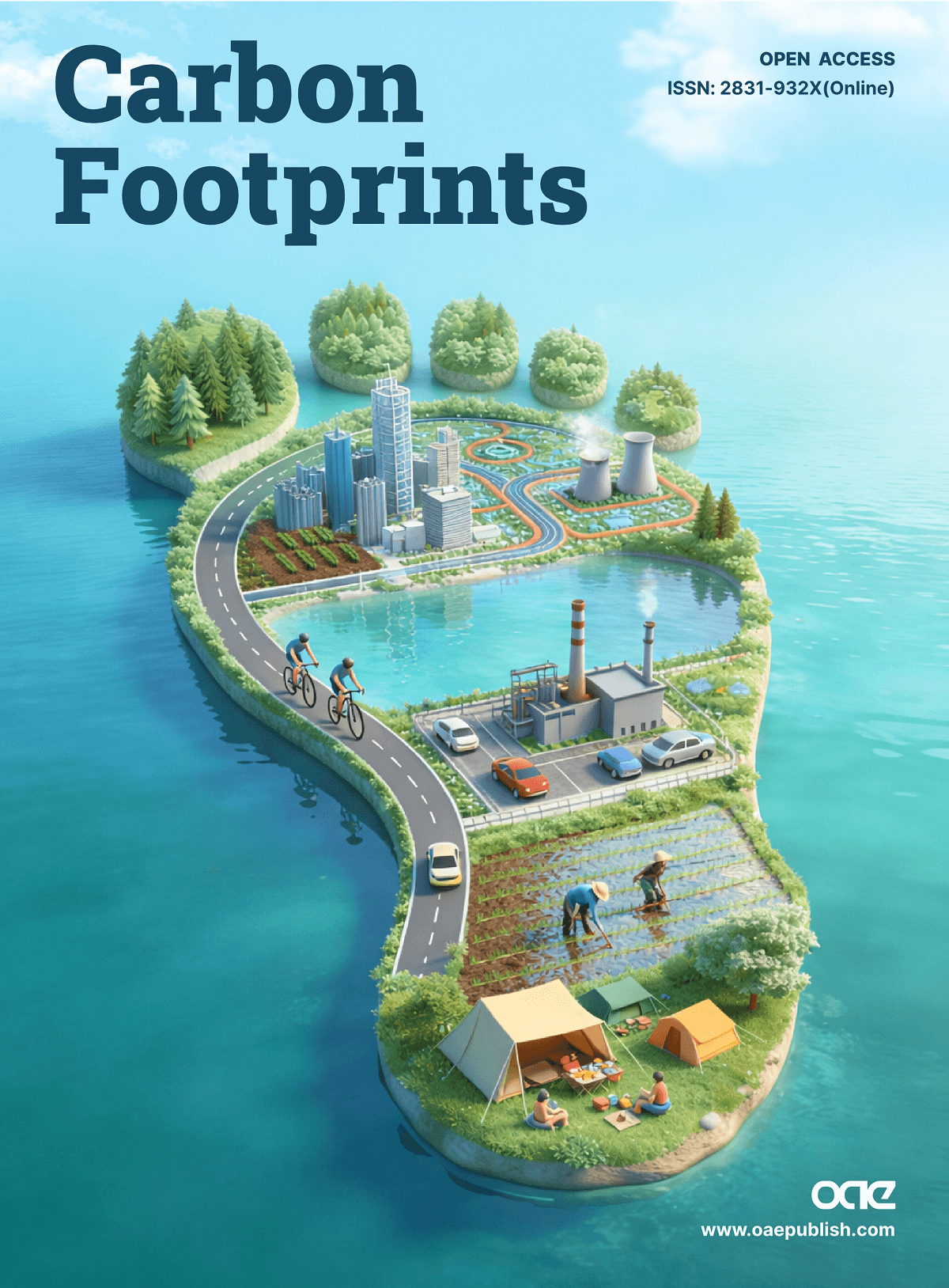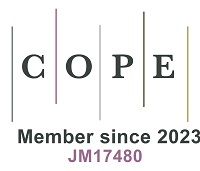REFERENCES
1. United Nations Department of Economic and Social Affairs, Population Division. World population prospects 2022: summary of results. 2022. Available from: https://www.un.org/development/desa/pd/sites/www.un.org.development.desa.pd/files/wpp2022_summary_of_results.pdf [Last accessed on 8 Sep 2023].
2. United Nations, Department of Economic and Social Affairs, Population Division. World urbanization prospects 2018: highlights. 2019. Available from: https://population.un.org/wup/Publications/Files/WUP2018-Highlights.pdf [Last accessed on 8 Sep 2023].
3. Sukko K. Urban development in the United States, 1690-1990. Working paper 7120. National bureau of economic research. p. 46. Available from: https://www.nber.org/system/files/working_papers/w7120/w7120.pdf [Last accessed on 8 Sep 2023].
4. OpenStax college. The growing pains of urbanization, 1870-1900 - urbanization and its challenges. Available from: https://pressbooks-dev.oer.hawaii.edu/ushistory/chapter/urbanization-and-its-challenges [Last accessed on 8 Sep 2023].
5. United Sates Census Bureau. 2020 urban areas FAQs. Available from: https://www2.census.gov/geo/pdfs/reference/ua/2020_Urban_Areas_FAQs.pdf [Last accessed on 8 Sep 2023].
6. World Bank based on information from the United Nations population division. World urbanization prospects: 2018 revision. Available from: https://data.worldbank.org/indicator/SP.URB.TOTL.IN.ZS?end=2021&start=2021&type=shaded&view=map&year=2021 [Last accessed on 8 Sep 2023].
7. Public space urban forestry division. Somerville urban forest management plan. Mayor’s office of strategic planning and community development city of somerville. 2021. p. 364. Available from: https://www.somervillema.gov/urbanforestry [Last accessed on 8 Sep 2023].
8. Cowie A, Woolf D, Gaunt J, et al. Biochar, carbon accounting and climate change. In: Lehmann J, Joseph S, editors. Biochar for environmental management. Science, technology and implementation. London: Routledge; 2015.
9. Athanassiadis A, Crawford RH, Bouillard P. Overcoming the “black box” approach of urban metabolism. In: Crawford RH, Stephan A, editors. Living and learning: research for a better built environment: 49 th international conference of the architectural science association, the architectural science association and the university of melbourne. 2015. pp. 547-56. Available from: https://rest.neptune-prod.its.unimelb.edu.au/server/api/core/bitstreams/6f8ad749-51bf-560f-9f3e-303db1122e69/content [Last accessed on 8 Sep 2023].
10. IPCC. Urban systems and other settlements. In: Shukla PR, Skea J, Slade R, et al., editors. Climate change 2022: mitigation of climate change. Contribution of working group III to the sixth assessment report of the intergovernmental panel on climate change. Cambridge and New York: Cambridge University Press. 2022. Available from: https://www.ipcc.ch/report/ar6/wg3/downloads/report/IPCC_AR6_WGIII_Chapter_08.pdf [Last accessed on 8 Sep 2023].
11. Li D, Ma J, Cheng T, van Genderen JL, Shao Z. Challenges and opportunities for the development of MEGACITIES. Int J Digit Earth 2019;12:1382-95.
12. Singh R, Verma P, Kumar SV, Srivastava P, Kumar A. Urban ecology and climate change: challenges and mitigation strategies. In: Bhadouria R, Upadhyay S, Tripathi S, Singh P, Editors. Urban ecology and global climate change. New York: John Wiley & Sons. 2022. Available from: https://onlinelibrary.wiley.com/doi/epub/10.1002/9781119807216 [Last accessed on 8 Sep 2023].
13. IPCC. AR4 climate change 2007: physical science basis. Contribution of working group 1 to the fourth assessment report of the intergovernmental panel on climate change. Cambridge: Cambridge University Press. NOAA. State of the climate. National Overview. 2007. Available from: https://www.ipcc.ch/report/ar4/wg1/ Last accessed on 12 Sep 2023].
14. IPCC. Summary for policymakers. In: Masson-Delmotte V, Zhai P, Pirani A, et al, editors. Climate change 2021: the physical science basis. Contribution of working group I to the sixth assessment report of the intergovernmental panel on climate change. Cambridge: Cambridge University Press. 2011. Available from: https://www.ipcc.ch/report/ar6/wg1/downloads/report/IPCC_AR6_WGI_SPM.pdf [Last accessed on 8 Sep 2023].
15. Office of Management and Budget. 2010 standards for delineating metropolitan and micropolitan statistical areas; notice. 2010. Available from: https://www.govinfo.gov/content/pkg/FR-2010-06-28/pdf/2010-15605.pdf [Last accessed on 8 Sep 2023].
16. Leyk S, Uhl HJ, Connor SD, et al. Two centuries of settlement and urban development in the United States. Sci Adv 2020;6:eaba2937.
17. United Sates Census Bureau. U.S. and world population clock. Available from: https://www.census.gov/popclock/ [Last accessed on 8 Sep 2023].
18. Smith A. 2021 U.S. billion-dollar weather and climate disasters in historical context. 2022. Available from: https://www.climate.gov/news-features/blogs/beyond-data/2021-us-billion-dollar-weather-and-climate-disasters-historical [Last accessed on 8 Sep 2023].
19. Liu Z, Zhan W, Bechtel B, et al. Surface warming in global cities is substantially more rapid than in rural background areas. Commun Earth Environ 2022;3:219.
20. Verma P, Singh R, Singh P, Raghubanshi AS. Critical assessment and future dimensions for the urban ecological systems. In: Verma P, Singh P, Singh R, Raghubanshi AS, editors. Urban ecology. Amsterdam: Elsevier; 2020. pp. 479-97.
21. Bhadouria R, Upadhyay S, Tripathi S, Singh P. Urban ecology and global climate change. New York: John Wiley & Sons; 2022. p.352. Available from: https://onlinelibrary.wiley.com/doi/book/10.1002/9781119807216 [Last accessed on 8 Sep 2023].
22. Chester A, abd Lawron J. Atlas of disaster. Rebuild by design. Institute for Public Knowledge, New York University, and iParametrics. 2022. p. 342. https://rebuildbydesign.org/wp-content/uploads/2023/04/ATLAS-OF-DISASTER-compressed.pdf [Last accessed on 12 Sep 2023].
23. Sujathamma C. Environmental issues of urban areas and wellness. Int J Sci Dev Res 2019;4. Available from: https://www.ijsdr.org/papers/IJSDR1905103.pdf [Last accessed on 8 Sep 2023].
24. World Health Organization. Urban planning for resilience and health: key messages - summary report on protecting environments and health by building urban resilience. Copenhagen: WHO Regional Office for Europe; 2022. Available from: https://www.who.int/europe/publications/i/item/WHO-EURO-2022-5650-45415-64990 [Last accessed on 8 Sep 2023].
25. Gaston KJ, Ávila-Jiménez ML, Edmondson JL. Managing urban ecosystems for goods and services. J Appl Ecol 2013;50:830-40.
26. Barboza PE, Cirach M, Khomenko S, et al. Green space and mortality in European cities: a health impact assessment study. Lancet Planet Health 2021;5:e718-30.
27. Croeser T, Garrard GE, Visintin C, et al. Finding space for nature in cities: the considerable potential of redundant car parking. NPJ Urban Sustain 2022;2:27.
28. Connop S, Vandergert P, Eisenberg B, et al. Renaturing cities using a regionally-focused biodiversity-led multifunctional benefits approach to urban green infrastructure. Environ Sci Policy 2016;62:99-111.
29. Raymond CM, Frantzeskaki N, Kabisch N, et al. A framework for assessing and implementing the co-benefits of nature-based solutions in urban areas. Environ Sci Policy 2017;77:15-24.
30. Cadenasso ML, Pickett TAS, Grove JM. Integrative approaches to investigating human-natural systems: the Baltimore ecosystem study. Nat Sci Soc 2006;14:4-14.
31. Nowak JD, Stein MS, Randler BP, et al. Sustaining America’s urban trees and forests: a forests on the edge report. p. 27 Available from: https://www.fs.usda.gov/openspace/fote/reports/nrs-62_sustaining_americas_urban.pdf [Last accessed on 8 Sep 2023].
32.
33. Nowak JD, Greenfield JE. Declining urban and community tree cover in the United States. Urban For Urban Green 2018;32:32-55.
34. Coville CR, Kruegler J, Selbig RW, et al. Loss of street trees predicted to cause 6000 L/tree increase in leaf-on stormwater runoff for Great Lakes urban sewershed. Urban For Urban Green 2022;74:127649.
35. Pataki DE, Alberti M, Cadenasso ML, et al. The benefits and limits of urban tree planting for environmental and human health. Front Ecol Evol 2021;9:603757.
36. Shen YS, Lung CS. Can green structure reduce the mortality of cardiovascular diseases? Sci Total Environ 2016;566-7:1159-67.
37. Crouse DL, Pinault L, Balram A, et al. Urban greenness and mortality in Canada's largest cities: a national cohort study. Lancet Planet Health 2017;1:e289-97.
38. Donovan HG, Prestemon PJ, Gatziolis D, Michael YL, Kaminski AR, Dadvand P. The association between tree planting and mortality: a natural experiment and cost-benefit analysis. Environ Int 2022;170:107609.
39. Sinha P, Coville CR, Hirabayashi S, Lim B, Endreny TA, Nowak DJ. Variation in estimates of heat-related mortality reduction due to tree cover in U.S. cities. J Environ Manage 2022;301:113751.
40. Wolf KL, Lam ST, McKeen JK, Samsudin R. Urban trees and human health: a scoping review. Int J Environ Res Public Health 2020;17:4371. Available from: https://www.mdpi.com/1660-4601/17/12/4371 [Last accessed on 8 Sep 2023].
41. Zhang L, Tan PY, Gan RYD, Samsudin R. Assessment of mediators in the associations between urban green spaces and self-reported health. Landsc Urban Plan 2022;226:104503.
42. United Kingdom Government. Department for environment, food and rural affairs. Tree Health Resilience Strategy. 2018. p. 63. Available from: https://assets.publishing.service.gov.uk/government/uploads/system/uploads/attachment_data/file/710719/tree-health-resilience-strategy.pdf [Last accessed on 8 Sep 2023].
43. Nowak DJ, Greenfield EJ. U. S. urban forest statistics, values and projections. J For 2018;116:164-77.
44. Lehmann J, Joseph S. Biochar for environmental management: an introduction. In: Lehmann J, Joseph S, editors. Biochar for environmental management: science and technology. London: Earthscan; 2009. pp. 1-12. Available from: https://www.biochar-international.org/wp-content/uploads/2018/04/Biochar_book_Chapter_1.pdf [Last accessed on 8 Sep 2023].
45. Manyà JJ. Pyrolysis for biochar purposes: a review to establish current knowledge gaps and research needs. Environ Sci Technol 2012;46:7939-54.
46. Fuchs M, Garcia-Perez M, Small P, Flora G. Campfire lessons - breaking down the combustion process to understand biochar production and characterization. Biochar J 2014. Available from https://www.biochar-journal.org/itjo/media/doc/1420082881242.pdf [Last accessed on 8 Sep 2023].
47. Hornung A, Stenzel F, Grunwald J. Biochar - just a black matter is not enough. Biomass Conv Bioref 2021. Available from: https://link.springer.com/article/10.1007/s13399-021-01284-5#citeas [Last accessed on 8 Sep 2023].
48. Mesa AC, Spokas KA. Impacts of biochar (black carbon) additions on the sorption and efficacy of herbicides. In: Kortekamp A, editor. Herbicides and environment. 2011. pp. 315-40. Available from: https://www.intechopen.com/chapters/12591 [Last accessed on 8 Sep 2023].
49. Harry GH, Howe J, Bowyer J, Levins RA, Fernholz K. Biochar as an innovative wood product: a look at barriers to realization of its full potential. 2017. Available from: https://www.dovetailinc.org/portfoliodetail.php?id=5e2622ce74378 [Last accessed on 8 Sep 2023].
50. Rockwood DL, Ellis MF, Liu R, et al. Forest trees for biochar and carbon sequestration: production and benefits. In: Abdelhafez AA, Abbas MHH, editors. Applications of biochar for environmental safety. London: IntechOpen; 2020. Available from: https://www.intechopen.com/chapters/72115#:~:text=DOI%3A%2010.5772/intechopen.92377 [Last accessed on 8 Sep 2023].
51. Baltar R. Report on options for utilization of surplus biomass coming from the Usal Forest. In: Redwood forest foundation. 2018. p. 81. Available from: https://www.rffi.org/Library/RFFI_Equipment_Alternatives_Report%2012_14_18.pdf [Last accessed on 8 Sep 2023].
52. Amonette JE, Blanco-Canqui H, Hassebrook C, et al. Integrated biochar research: a roadmap. J Soil Water Conserv 2021;76:24A-9A.
54. Bindar Y, Budhi WY, Hernowo P, Wahyu S, Saquib S, Setiadi T. 1 - sustainable technologies for biochar production. In: Ngo HH, Guo W, Pandey A, Varjani S, Tsang DCW, editors. Current developments in biotechnology and bioengineering. Amsterdam: Elsevier; 2023. pp. 1-40. Available from: https://www.sciencedirect.com/science/article/abs/pii/B9780323918732000133 [Last accessed on 8 Sep 2023].
55. Yu Q, Wang Y, Van Le Q, et al. An overview on the conversion of forest biomass into bioenergy. Front Energy Res 2021;9:684234.
56. Gustafsson M. Stockholm biochar project. US biochar initiative presentations. 2018. Available from: https://biochar-us.org/sites/default/files/presentations/2.3.1%20Stockholm%20Biochar%20Project%20Mattias%20Gustafsson%20-.pdf [Last accessed on 8 Sep 2023].
57. Hellmann J, Gustafsson M, Ek L. Biochar-urban forestry strategy for the city of Stockholm, Sweden. Urban sustainability directors network. 2022. p. 13. Available from: https://carbonneutralcities.org/wp-content/uploads/2023/02/Stockholm-Strategy.pdf Last accessed on 12 Sep 2023].
58. Kärkkäinen A, Iliescu O, Jalas M, Salo E. Biochar-urban forestry strategy: biochar feedstock options, benefits, and potential applications in the greater Helsinki area. Urban sustainability directors network. 2022. p. 27. Available from: https://www.usdn.org/uploads/cms/documents/biochar_boulder_co.zip Last accessed on 8 Sep 2023].
59. Cambium carbon. biochar-urban forestry strategy for the city of boulder, colorado. urban sustainability directors network. 2022. p. 13. Available from: https://static1.squarespace.com/static/5d1e51dd2a98da000183bc20/t/63190210b6062c7def5f43b5/1662583317768/%28Cambium+Carbon%29+Boulder+Strategy_FINAL.pdf [Last accessed on 8 Sep 2023].
60. Cambium carbon. Biochar-urban forestry strategy for the city of Minneapolis, Minnesota. Urban Sustainability Directors Network. 2022. 13p. Available from: https://static1.squarespace.com/static/5d1e51dd2a98da000183bc20/t/6319024b58da104024ba7f28/1662583372474/%28Cambium+Carbon%29+Minneapolis+Strategy_FINAL.pdf [Last accessed on 8 Sep 2023].
61. Jatav HS, Rajput VD, Minkina T, et al. Sustainable approach and safe use of biochar and its possible consequences. Sustainability 2021;13:10362.
62. Wilson KJ. A carbon conservation corps to restore forests with biochar using flame cap kilns. In: 2021 ASABE annual international virtual meeting. American Society of Agricultural and Biological Engineers. 2021. Available from: https://elibrary.asabe.org/techpapers.asp?confid=virt2021 [Last accessed on 8 Sep 2023].
63. McAvoy D. Hazardous fuels reduction using flame cap biochar kilns. Fact sheet 037. 2019. Available from: https://extension.usu.edu/forestry/publications/utah-forest-facts/037-hazardous-fuels-reduction-using-flame-cap-biochar-kiln [Last accessed on 8 Sep 2023].
64. Center of Biochar and Green Agriculture. An introduction to biochar technology and products available in China. Nanjing: Nanjing Agricultural University; 2015. 15p. Available from: https://dokumen.tips/documents/an-introduction-to-biochar-technology-and-products-an-introduction-to-biochar.html?page=3 [Last accessed on 8 Sep 2023].
65. Zhang X, Luo Y, Müller K, et al. Research and application of biochar in China. In: Guo M, He Z, Uchimiya SM, editors, Agricultural and environmental applications of biochar: advances and barriers. 2016.
66. National Oceanic and Atmospheric Administration (NOAA). NOAA carbon dioxide removal research: a white paper documenting a potential NOAA CDR science strategy as an element of NOAA’s climate mitigation portfolio. Carbon dioxide removal task force. 2022. Available from: https://sciencecouncil.noaa.gov/Portals/0/Documents/Clean%20copy%20of%20Draft%20CDR%20Research%20Strategy.pdf?ver=2022-09-21-143831-560 [Last accessed on 8 Sep 2023].
67. Campbell RM, Anderson NM, Daugaard DE, Naughton HT. Financial viability of biofuel and biochar production from forest biomass in the face of market price volatility and uncertainty. Appl Energy 2018;230:330-43.
68. U.S. Biochar initiative. Biochar slows climate change. 2023. Available from: https://biochar-us.org/biochar-slows-climate-change [Last accessed on 8 Sep 2023].
69. HP Schmidt, C Kammann, N Hagemann. Certification of the carbon sink potential of biochar. Version 1.0E of 1st June 2020. Arbaz, Switzerland: Ithaka Institute, 2020. Available from: https://www.european-biochar.org/media/doc/2/c_en_sink-value_5.pdf [Last accessed on 8 Sep 2023].
70. IPCC. Chapter 6: cities, settlements and key infrastructure. In: Pörtner HO, Roberts DC, Tignor M, et al., editors. Climate change 2022: Impacts, adaptation and vulnerability. contribution of working group II to the sixth assessment report of the intergovernmental panel on climate change. Cambridge, UK/New York, NY: Cambridge University Press; 2022. pp. 907-1040. Available from: https://www.ipcc.ch/report/ar6/wg2/downloads/report/IPCC_AR6_WGII_Chapter06.pdf [Last accessed on 8 Sep 2023].
71. Smith P. Soil carbon sequestration and biochar as negative emission technologies. Glob Change Biol 2016;22:1315-24.
72. Mohanty SK, Valenca R, Berger AW, et al. Plenty of room for carbon on the ground: Potential applications of biochar for stormwater treatment. Sci Total Environ 2018;625:1644-58.
73. Alvem BM, Embrén B. Trees and stormwater management-the stockholm solution. 2014. Available from: https://sfbiochar.com/docs/urban/Trees_and_Stormwater_Management_The_Stockholm_Solution.pdf [Last accessed on 8 Sep 2023].
74. Embrén B. Planting urban trees with biochar. Available from: https://www.biochar-journal.org/en/ct/77 [Last accessed on 8 Sep 2023].
75. Nordregio. Stockholm biochar project. 2018. Available from: https://nordregio.org/sustainable_cities/stockholm-biochar-project/#:~:text=This%20project%20reduces%20carbon%20emissions,soil%20for%20thousands%20of%20years [Last accessed on 8 Sep 2023].
76. Azzi ES, Karltun E, Sundberg C. Life cycle assessment of urban uses of biochar and case study in Uppsala, Sweden. Biochar 2022;4:18.
77. Fransson AM, Sandell B, Malmberg J, Pettersson L, Bernhoff SO, Bromell LO. Biochar in urban applications in bio-Char II: production, characterization and applications. 2019. Available from: https://dc.engconfintl.org/biochar_ii/15 [Last accessed on 8 Sep 2023].
78. Center for Regenerative Solutions. About center for regenerative solutions. 2023. Available from: https://naturebasedclimate.solutions/about [Last accessed on 8 Sep 2023].
79. Draper K, Schmidt HP. Urban bioenergy-biochar: an opportunity assessment for municipalities. Urban Drawdown Initiative & Ithaka Institute. 31p. 2021. Available from: https://biochar-us.org/urban-bioenergy-biochar-opportunity-assessment-municipalities [Last accessed on 8 Sep 2023].
80. Carbon Neutral Cities Alliance. Urban forest biomass to biochar playbook CNCA biochar-urban forest strategy. Urban Sustainability Directors Network. 2022. 11p. Available from: https://carbonneutralcities.org/wp-content/uploads/2023/02/BiocharPlaybook.pdf [Last accessed on 8 Sep 2023].
81. Lee J, Ko Y, Mcpherson EG. The feasibility of remotely sensed data to estimate urban tree dimensions and biomass. Urban For Urban Gree 2016;16:208-20.
82. Lan K, Zhang B, Yao Y. Circular utilization of urban tree waste contributes to the mitigation of climate change and eutrophication. One Earth 2022;5:944-57.
83. City of Nebraska. Lincoln awarded $400,000 for biochar initiative. 2022. Available from: https://klin.com/2022/06/29/lincoln-awarded-400000-for-biochar-initiative/ [Last accessed on 8 Sep 2023].
84. Salo E, Koivunen M, Passi S, Jalas, M. Report on concept designs for carbon drawdown. Carbon lane project. 2019. 44p. Available from: https://www.aalto.fi/sites/g/files/flghsv161/files/2020-02/Report%20on%20concept%20designs%20for%20carbon%20drawdown.pdf [Last accessed on 8 Sep 2023].
85. Hansen M, Howd P, Sallenger A, Wright WC, Lillycrop J. Estimation of post-katrina debris volume: an example from coastal mississippi. In: Science and the storms: the USGS response to the hurricanes of 2005. 2005. 6p. Available from: https://pubs.usgs.gov/circ/1306/pdf/c1306_ch3_e.pdf [Last accessed on 8 Sep 2023].
86. Hudgins EJ, Koch FH, Ambrose MJ, Leung B. Hotspots of pest-induced US urban tree death, 2020-2050. J Appl Ecol 2022;59:1302-12.
87. Nowak DJ, Greenfield EJ, Ash RM. Annual biomass loss and potential value of urban tree waste in the United States. Urban For Urban Green 2019;46:126469.
88. Environmental Protection Agency. Planning for natural disaster debris. 2008. 94p. Available from: https://nepis.epa.gov/Exe/ZyPDF.cgi/P1004PRS.PDF?Dockey=P1004PRS.PDF [Last accessed on 8 Sep 2023].
89. Groot H, Pepke E, Fernholz K, Henderson C, Howe J. Survey and analysis of the US biochar industry. dovetail partners. 2018. 26p. Available from: https://www.dovetailinc.org/upload/tmp/1579550188.pdf [Last accessed on 8 Sep 2023].
90. Macfarlane DW. Potential availability of urban wood biomass in Michigan: implications for energy production, carbon sequestration and sustainable forest management in the U.S.A. Biomass Bioenergy 2009;33:628-34.
91. Amonette JE, Archuleta JG, Fuchs MR, et al. Biomass to biochar: maximizing the carbon value. report by center for sustaining agriculture and natural resources. Pullman, WA: Washington State University; 2021. Available from: https://csanr.wsu.edu/biomass2biochar/ [Last accessed on 8 Sep 2023].
92. Environmental Protection Agency. Facts and figures about materials, waste and recycling. wood: material-specific data. 2022. Available from: https://www.epa.gov/facts-and-figures-about-materials-waste-and-recycling/wood-material-specific-data [Last accessed on 8 Sep 2023].
93. Kurniawan TA, Othman MHD, Liang X, et al. Challenges and opportunities for biochar to promote circular economy and carbon neutrality. J Environ Manage 2023;332:117429.
94. Poroma D, Cerda R, Somarriba E, Cifuentes M, Guerra L. Carbon footprint: what is it and how to measure it? 2012. Available from: https://repositorio.catie.ac.cr/bitstream/handle/11554/7804/620.pdf?sequence=2 [Last accessed on 8 Sep 2023].
95. Lombardi M, Laiola E, Tricase C, Rana R. Assessing the urban carbon footprint: an overview. Environ Impact Assess Rev 2017;66:43-52.
96. Selin NE. Carbon footprint. In: Encyclopedia britannica. Available from: https://www.britannica.com/science/carbon-footprint [Last accessed on 8 Sep 2023].
97. Environmental Protection Agency. Understanding global warming potentials. 2023. Available from: https://www.epa.gov/ghgemissions/understanding-global-warming-potentials#Learn%20why [Last accessed on 8 Sep 2023].
98. Vallero AD. Chapter 8 - Air pollution biogeochemistry. In: Air pollution calculations: quantifying pollutant formation, transport, transformation, fate and risks. Amsterdam, The Netherlands: Elsevier; 2019. pp. 175-206.
99. United Nations. World urbanization prospects: the 2018 revision (ST/ESA/SER.A/420). 2019. Available from: https://population.un.org/wup/publications/Files/WUP2018-Report.pdf [Last accessed on 8 Sep 2023].
100. Rondón-Quintana HA, Reyes-Lizcano FA, Chaves-Pabón SB, Bastidas-Martínez JG, Zafra-Mejía CA. Use of biochar in asphalts: review. Sustainability 2022;14:4745.
101. Roberts KG, Gloy BA, Joseph S, Scott NR, Lehmann J. Life cycle assessment of biochar systems: estimating the energetic, economic, and climate change potential. Environ Sci Technol 2010;44:827-833.
102. Homagain K, Shahi C, Luckai N, Sharma M. Life cycle environmental impact assessment of biochar-based bioenergy production and utilization in Northwestern Ontario. Canada J For Res 2015;26:799-809.
103. Azzi ES, Karltun E, Sundberg C. Prospective life cycle assessment of large-scale biochar production and use for negative emissions in stockholm. Environ Sci Technol 2019;53:8466-76.
104. Environmental Protection Agency. Greenhouse gas equivalencies calculator. 2023. Available from: https://www.epa.gov/energy/greenhouse-gas-equivalencies-calculator#results [Last accessed on 8 Sep 2023].








